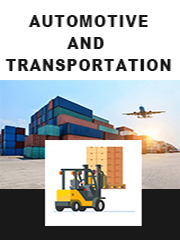Report overview
Automotive Cabin Air Filter is usually folded paper or some combination of paper and fibers. They are often rectangular or nearly square in shape and are simply a physical barrier to trap dust, pollen, leaves and other debris, reducing the flow of chemically contaminated air that makes it into the ventilation and air conditioning system. The particles accumulate on the surface of the filter and eventually cake up, forming their own layer, restricting the flow of incoming air. To keep the air clean in the cabin, these filters are intended to be discarded at least annually.
This report aims to provide a comprehensive presentation of the global market for Automotive Cabin Air Filter, with both quantitative and qualitative analysis, to help readers develop business/growth strategies, assess the market competitive situation, analyze their position in the current marketplace, and make informed business decisions regarding Automotive Cabin Air Filter. This report contains market size and forecasts of Automotive Cabin Air Filter in global, including the following market information:
Global Automotive Cabin Air Filter Market Revenue, 2018-2023, 2024-2029, ($ millions)
Global Automotive Cabin Air Filter Market Sales, 2018-2023, 2024-2029, (K Units)
Global top five Automotive Cabin Air Filter companies in 2022 (%)
The global Automotive Cabin Air Filter market was valued at US$ million in 2022 and is projected to reach US$ million by 2029, at a CAGR of % during the forecast period. The influence of COVID-19 and the Russia-Ukraine War were considered while estimating market sizes.
For industry structure analysis, the Automotive Cabin Air MANN+HUMMEL, JinWei and Universe Filter are the main manufacturers of China Automotive Cabin Air Filter, they occupy nearly 16% of the market. East China is the main China Production Market which hold about 45% of the Chinese market.
We surveyed the Automotive Cabin Air Filter manufacturers, suppliers, distributors and industry experts on this industry, involving the sales, revenue, demand, price change, product type, recent development and plan, industry trends, drivers, challenges, obstacles, and potential risks.
Total Market by Segment:
Global Automotive Cabin Air Filter Market, by Type, 2018-2023, 2024-2029 ($ Millions) & (K Units)
Global Automotive Cabin Air Filter Market Segment Percentages, by Type, 2022 (%)
Particle Automotive Cabin Air Filter
Charcoal Automotive Cabin Air Filter
Global Automotive Cabin Air Filter Market, by Application, 2018-2023, 2024-2029 ($ Millions) & (K Units)
Global Automotive Cabin Air Filter Market Segment Percentages, by Application, 2022 (%)
Passenger Vehicle
Commercial Vehicle
Global Automotive Cabin Air Filter Market, By Region and Country, 2018-2023, 2024-2029 ($ Millions) & (K Units)
Global Automotive Cabin Air Filter Market Segment Percentages, By Region and Country, 2022 (%)
North America
US
Canada
Mexico
Europe
Germany
France
U.K.
Italy
Russia
Nordic Countries
Benelux
Rest of Europe
Asia
China
Japan
South Korea
Southeast Asia
India
Rest of Asia
South America
Brazil
Argentina
Rest of South America
Middle East & Africa
Turkey
Israel
Saudi Arabia
UAE
Rest of Middle East & Africa
Competitor Analysis
The report also provides analysis of leading market participants including:
Key companies Automotive Cabin Air Filter revenues in global market, 2018-2023 (Estimated), ($ millions)
Key companies Automotive Cabin Air Filter revenues share in global market, 2022 (%)
Key companies Automotive Cabin Air Filter sales in global market, 2018-2023 (Estimated), (K Units)
Key companies Automotive Cabin Air Filter sales share in global market, 2022 (%)
Further, the report presents profiles of competitors in the market, key players include:
MANN+HUMMEL
JinWei
Bosch
MAHLE
Universe Filter
Freudenberg
YBM
Phoenix
Baowang
TOYOTA BOSHOKU
OST
OKYIA
Dongguan Shenglian
Guangzhou Yifeng
Hengst
Outline of Major Chapters:
Chapter 1: Introduces the definition of Automotive Cabin Air Filter, market overview.
Chapter 2: Global Automotive Cabin Air Filter market size in revenue and volume.
Chapter 3: Detailed analysis of Automotive Cabin Air Filter manufacturers competitive landscape, price, sales and revenue market share, latest development plan, merger, and acquisition information, etc.
Chapter 4: Provides the analysis of various market segments by type, covering the market size and development potential of each market segment, to help readers find the blue ocean market in different market segments.
Chapter 5: Provides the analysis of various market segments by application, covering the market size and development potential of each market segment, to help readers find the blue ocean market in different downstream markets.
Chapter 6: Sales of Automotive Cabin Air Filter in regional level and country level. It provides a quantitative analysis of the market size and development potential of each region and its main countries and introduces the market development, future development prospects, market space of each country in the world.
Chapter 7: Provides profiles of key players, introducing the basic situation of the main companies in the market in detail, including product sales, revenue, price, gross margin, product introduction, recent development, etc.
Chapter 8: Global Automotive Cabin Air Filter capacity by region & country.
Chapter 9: Introduces the market dynamics, latest developments of the market, the driving factors and restrictive factors of the market, the challenges and risks faced by manufacturers in the industry, and the analysis of relevant policies in the industry.
Chapter 10: Analysis of industrial chain, including the upstream and downstream of the industry.
Chapter 11: The main points and conclusions of the report.
